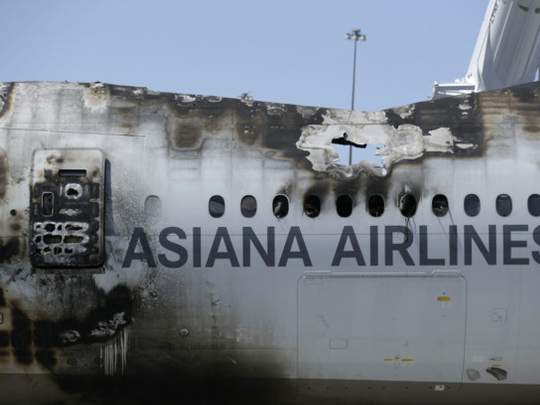
As details emerge from the investigation into what went wrong aboard Asiana Flight 214, which crashed at San Francisco International Airport on July 6, killing three passengers and injuring scores more, some travellers may find themselves thinking twice about boarding their next flight.
But Patrick Smith, a commercial pilot who writes a blog called Ask the Pilot, says not to worry.
According to the Federal Aviation Administration, there are 30,000 flights a day in the United States.
“And at the end of every year the number of mishaps can be counted on one hand,” Smith said.
This is a far cry, he added, from the dark days of the 1970s and 1980s, in which aircraft crashes were more common and sometimes resulted in 200, 300, even 500 deaths.
In his new book, Cockpit Confidential: Everything You Need to Know About Air Travel: Questions, Answers, and Reflections, he talks about why safety has improved, as well as less gloomy tidbits about the mysteries and pleasures of flying and travel.
Below are edited excerpts from a conversation with Smith on air safety and what you should keep in mind.
You say air travel today is astonishingly safe. Why?
We’ve engineered away what used to be some of the most common causes of catastrophic crashes. First, there’s better crew training. You no longer have that strict hierarchical culture in the cockpit, where the captain was king and everyone blindly followed his orders. It’s team oriented nowadays. We draw resources in from the cabin crew, people on the ground, our dispatchers, our meteorologists, so everyone’s working together to ensure safety.
The modernisation of the cockpit in terms of materials and technology has eliminated some of the causes for the accidents we saw in the 1970s into the 1980s. And the collaborative efforts between airlines, pilot groups and regulators such as the Federal Aviation Administration and the International Civil Aviation Organization, a global oversight entity, have gone a long way in improving safety on a global level.
Nevertheless, are there any airlines or aircraft you avoid on account of their safety records?
My answer on both accounts, airline and aicraft, is don’t worry about it. On some statistical level, if you hash it out to the fourth decimal point, one airline or type of aircraft may be less safe than the other, but that doesn’t mean the same thing as unsafe. This is where I part ways with some older-school colleagues because, to me, virtually all commercial carriers are extremely safe.
Even small regional airlines whose names you’ve never heard of?
Even them. Those regional jets, the 50-seaters, they’re small. And because they’re small, people tend to be apprehensive. But inherently there’s nothing that makes a large aircraft safer than a small aircraft; it’s simply that you’re more disconnected from the sensations of flights on a large aircraft.
Really, the aircraft is as safe as the people flying it. And because of all these global improvements in the industry, I can’t think of a single airline I wouldn’t fly on. Many, many airlines have safety records on par with any European or US mainstream carrier. The list of airline carriers that have never had a crash is quite long.
What safety tips do you recommend to fliers?
Familiarise yourself with where your exits are. Airlines are their own worst enemies when it comes to safety briefings. They have fattened them up with so much legal fine print that people tune out the useful information, which, foremost, is where the exits are.
If something terrible does happen, leave your stuff behind, even your purse beneath your seat. Keep your hands free. Carrying your belongings with you slows things down, and that’s the worst thing that can happen during an emergency evacuation.




